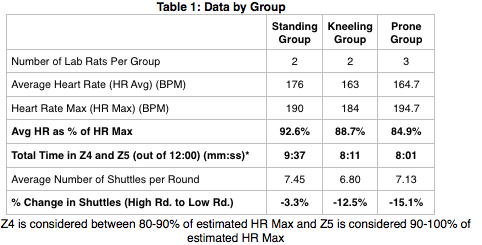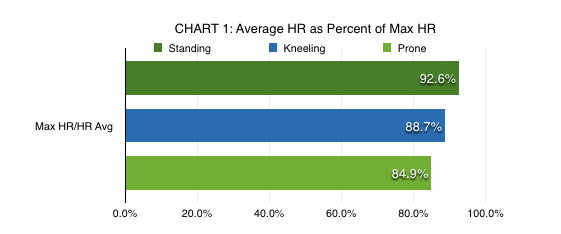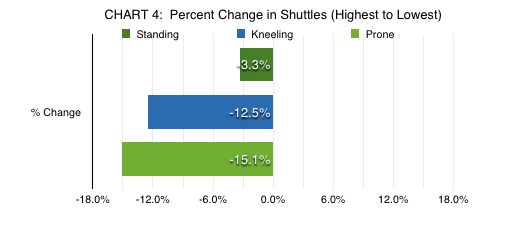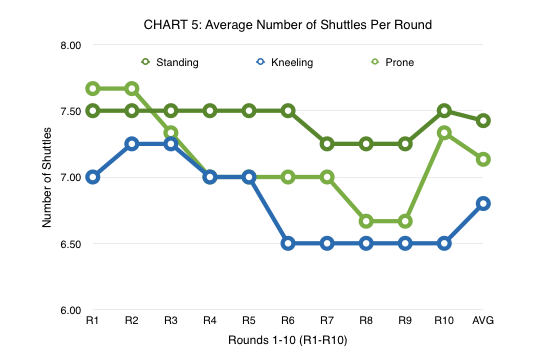
Adam Scott, MS, CSCS
Winston Churchill attributed his success in life to it. For athletes, it could mean the difference between fourth quarter success or failure. For tactical athletes, it could be a matter of life or death. Churchill called it: “economy of effort.” Although, by no means an athlete, maybe the famed British Prime Minister was on to something when he said: “Never stand up when you can sit down, and never sit down when you can lie down.” After all, he did win a Nobel Prize for Literature, write an estimated 10 million words in more than 40 books and publish thousands of newspaper and magazine articles.
For a tactical athlete, economy of effort on the battlefield is about being able to move quickly and recover rapidly in order to put shots on target. Economy of effort in movement is not an option – not when rounds are flying. So, for a tactical athlete, this means economy in recovery. And while most tactical athletes train movement (sprints, work capacity, etc.) and train shooting, how many of them train efficient recovery?
It was this question which got us interested in the idea of inter-session recovery and its place in tactical fitness. Below is a brief discussion of our first look at the topic.
This first study was a simple look at three recovery positions, their effect on Heart Rate (HR) and their effect on shuttle sprint performance. Because the groups were so small we decided to stick with simple descriptive statistics when discussing the results.
Methods
Seven of our lab rats were randomly assigned to one of three recovery position groups: (1) Standing, (2) Kneeling and (3) Laying Prone. The lab rats then completed the following training:
(1) 10 rounds, with 25# vest
30 sec, 40ft-shuttles
30 sec, Rest in their assigned position
Athletes were instructed to give 100% efforts on each sprint, then immediately assume their resting position. This 30-second sprint, 30-second recovery methodology is what we call our 30/30 Protocol.
The total training time for the event was 10 minutes. Data collection included a 2-minute recovery period for a total assessed time of 12 minutes. We used the Polar Team – Indoor Training App® and Polar H7® bluetooth monitors to collect our heart rate data. Performance was assessed by recording the number of shuttles each athlete was able to complete in the 30 second period.
All seven of the athletes had at least 3 months of training prior to our test, and all had previously participated in at least one 30/30 Sprint session.
Results and Discussion
Table 1: Data by Group
Two Heart Rate (HR) measures were used as our proxy to estimate effort during the training session. HR Max was used to identify 100% efforts on the sprints and HR Avg was used to identify overall average effort during the entire session. However, to assess the effects of recovery (and the recovery positions), we need to look at both of our physiological measures together.
Assuming that all shuttle sprints were completed at 100% effort (as prescribed) and all rest periods were completed at 0% effort, if we divide the athlete’s HR Max by their HR Avg we are able to approximate effort during the entire session as a percentage of maximum effort. Thus we are able to tease out the effect of the recovery periods and positions.
Chart 1 shows the recovery effects of each position. Since all three groups received the same amount of recovery (10 rounds of 30 sec, or 5 min total) differences in the percentages are likely due to the different positions. Note: Higher percentages are indicative of lower recovery.
Next, we looked at how long each athlete spent in each Heart Rate Training Zone. Zones were used to categorize training efforts and were calculated using the Polar® Sport definitions identified in Table 2. These definitions are based on an athlete’s estimated maximum heart rate as calculated by the equation:
220 – Athlete’s Age (years) = Estimated Max HR (in BPM)
Table 2: Polar ® Sport HR Zones
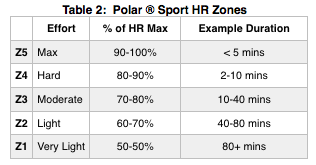
Chart 2 shows the average time athletes spent in Heart Rate Training Zones Z4 and Z5. These zones are indicative of the extremely high physical demands commonly associated with sprinting (80-100% HR Max). Since all athletes completed the same sprint volume (10 rounds of 30 sec, or 5 min total) any differences between groups are likely the result of differences in recovery. Note: More time in Z4 and Z5 is likely attributable to less effective recovery.
Both physiological assessments (Chart 1 and Chart 2) clearly point to the prone position as the most effective recovery method (as measured by HR). The second most effective recovery position that we assessed was kneeling. The least effective HR recovery position was standing.
Based on these physiological findings one might assume that performance measures would follow suit. It would seem evident that more recovery would be associated with better-repeated performance. However, our small study showed something quite different.
Chart 3 shows the average number of shuttles completed by each group over the 10 sprinting rounds. It clearly shows that, although randomly assigned, the standing group had the best performance scores (7.43 shuttles per round). Next was the prone group at 7.13 shuttles, followed by the kneeling group at 6.80 shuttles per round. These findings are in direct contrast to what one would assume based on the HR data.
After not finding any attributable differences in overall performance we decided to look for possible cumulative performance effects and evidence of fatigue (i.e. a lack of recovery). Chart 4 shows the percent change in performance for each group. This was calculated by comparing each group’s best round (round 2 for all groups) with its worst round (round 9 for all groups). Again, in contrast to the physiological data, the standing group was the big winner. The standing group experienced only a 3.3% decrease in performance while the prone group (with the highest HR recovery) experienced a 15.1% decrease in performance.
We found similar results when we graphed each groups per round average shuttle performances. This data can be found in Chart 5. All groups experienced some decline in performance over the course of the event, but clearly, the standing group’s performance was least affected.
What’s Next
This preliminary study was a simple, quick look at what we believe is an important topic for tactical athletes – recovery efficiency. For a tactical athlete, the ability to recover quickly and perform during a high-stress tactical event is vital to their combat effectiveness.
Based on my observations I would estimate that the differences we found between HR recovery and repeated performance are more attributable to an individual athlete’s fitness than their recovery positions. Obviously, we will need more subjects and trials to see if this hunch is true or if there is some other factor which might account for the performance variations – Maybe repeated getting-up from the prone position negatively impacted performance? or Maybe standing helped stimulate active recovery which kept the athletes better prepared to sprint?– at this point we just don’t know.
Our next steps are to dig deeper into the research, start looking at opportunities to expand our research and conduct follow-up studies. Ideally, we want to drill-down into more tactically specific positions and possibly add a shooting component to our drills.
We are also interested in what other factors might affect recovery and performance during repeated high-intensity efforts. One avenue we are interested in exploring is the sport of Biathlon and the use of recovery techniques like Applied Tension Release (ATR) training.
We will keep you posted as we continue to dig into this very important and, often overlooked, aspect of training.
Questions, Comments, Feedback? Email coach@mtntactical.com
References
- Army, H.D.o.t., The Infantry Rifle Platoon and Squad. 2007: Headquarters Department of the Army.
- Blount, E.M., Tolk, A., Ringleb, S.I., Tactically Fit. 2010, Norfolk Virginia: Manuscript prepared for the VMASC Capstone Conference 2010.
- Laaksonen, M.S., Ainegren, M., Kisspers, J., Evidence of improved shooting precision in biathlon after 10 weeks of combined relaxation and specific shooting training. Cognitive
- Behaviour Therapy 12/2011; 40(4):237-50. DOI: 10.1080/16506073.2011.616217
- Larsen, C.E., Light Infantry Tactics For Small Teams. 2005, Bloomington Indiana: Author House 3/16/05. 243.
You Might Also Like Fitness is a Tactical Weapon as Important to a Soldier as His Rifle
STAY UPDATED
Sign-up for our BETA newsletter. Training tips, research updates, videos and articles - and we’ll never sell your info.

